The Be Quiet! Silent Base 600 ATX Case Review
by E. Fylladitakis on November 17, 2016 9:00 AM EST- Posted in
- Cases/Cooling/PSUs
- be quiet!
- ATX
- Case
- Silent Base 600
The Exterior of the Be Quiet! Silent Base 600
Be Quiet! tried to aesthetically balance the Silent Base 600, with the simple geometric shapes forming an understated, yet modern design. It is an all-black case with a colored trim surrounding the front intake air vents and the windowed side panel. The Silent Base 600 is available with its trim colored orange, black or silver; we received the orange version for this review. The matte black paint is very smooth and flawlessly applied, with an excellent feel to the touch, but its treated surface is like a sponge for fingermarks.
The proportions of the Silent Base 600 are normal for an advanced ATX case, with the exception of the extended width to allow for the support of more advanced cooling options. It measures 49.5 cm tall, 23.5 cm wide and 48.2 cm deep (19.5 × 9.25 × 19.4 in), which results to a volume of 57.3 liters. It shared almost the same volume as the BitFenix Pandora ATX and the Corsair Carbide 600Q (57.8 and 57.1 liters respectively), yet its width makes it significantly larger than a basic ATX case such as the Zalman Z9 Neo (48.4 liters).
11.2 oz soda can inserted as a size reference
Be Quiet! placed the front I/O ports at the top of the faceplate, on a roughly 30° angle, making it very convenient for the user to access them if the case is placed on or near the floor. There are two USB 2.0 ports, two USB 3.0 ports and the standard 3.5mm headphone jacks. The system's power on button is found at the top of the case and is a large, square button with an illuminated power logo. A small LED near the front of the case displays the HDD activity. There is no reset buton.
The magnetic faceplate door opens from right to left, revealing a black plastic fascia with three 5.25” drive slots. A thick layer of sound absorbing material is installed to the inside of the door. The front air intake filter is very conveniently accessible from here, removable by simply pulling it upwards. A close inspection above the 5.25" bays reveals a very small three-way switch, which is used as a basic but effective fan speed controller.
This is one of the few cases with a fan slot on the right side panel. The elegant square decorative plastic cover at the center of the right panel can be adjusted to allow for the installation of a 120 mm intake or exhaust fan. A simple metallic mesh dust filter is preinstalled into the slot. However, the installation of even a thin 120 mm fan on the right side of the case offers virtually no practical advantage and will cause several clearance issues. Even though it is possible to install a fan on the right side panel, the company does not recommend it. The design of the right side panel simply is identical to that of the left side panel of the non-windowed version of the case. Thick sound-dampening material is installed on the right side panel.
The vents at the top cover are very narrow, most likely designed so as to reduce the direct transfer of sound waves from the interior of the case, dampening the noise of the system. The user however needs to be careful with the selection of the fans, as very high airflow fans will cause the narrow openings to generate aerodynamic noise, negating any positive effects from this design.
A look at the rear of the Be Quiet! Silent Base 600 hints a lot about it design. The PSU compartment is found at the bottom of the case, vents are formed next to the expansion card covers and on the covers themselves, with a 120 mm exhaust fan right above them. The core concept of the design obviously is to draw air in as silently as possible via indirect openings at the front of the case and use positive pressure to force the air out of the rear of the case. The three round openings with the rubber grommets also hint that there is no room for very large liquid cooling systems inside the system area, but the designer thoughtfully offered the option to install an external liquid-based cooling system.
The Silent Base 600 stands on four very tall, square plastic feet with rubber anti-slip pads installed. These tall feet improve the bottom air intake of the case from the (optional) fan and the PSU. A nylon filter can be seen covering the PSU intake, which can be removed from the back of the case.



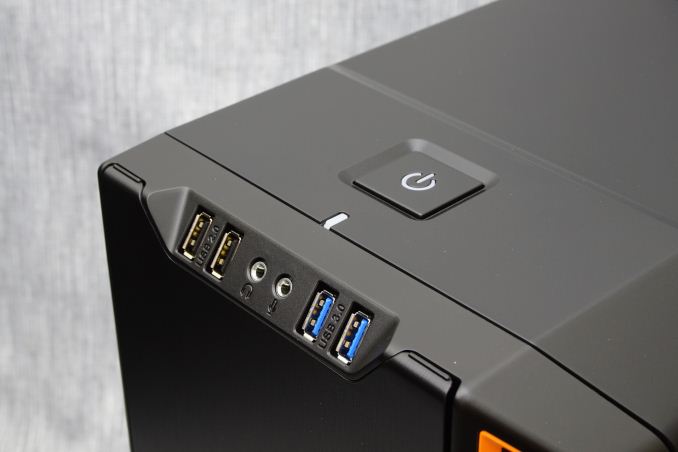
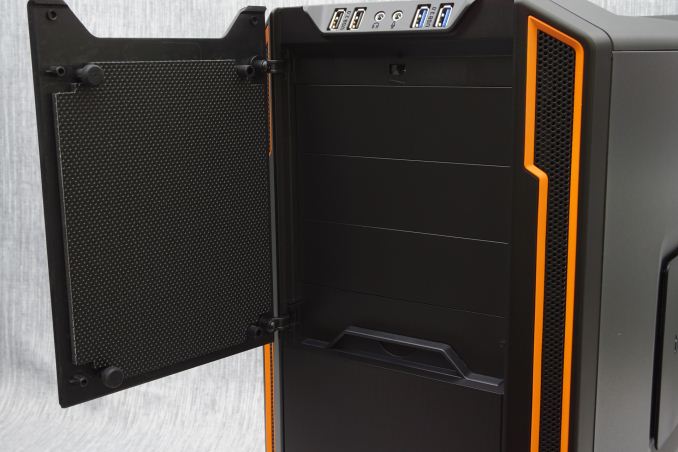
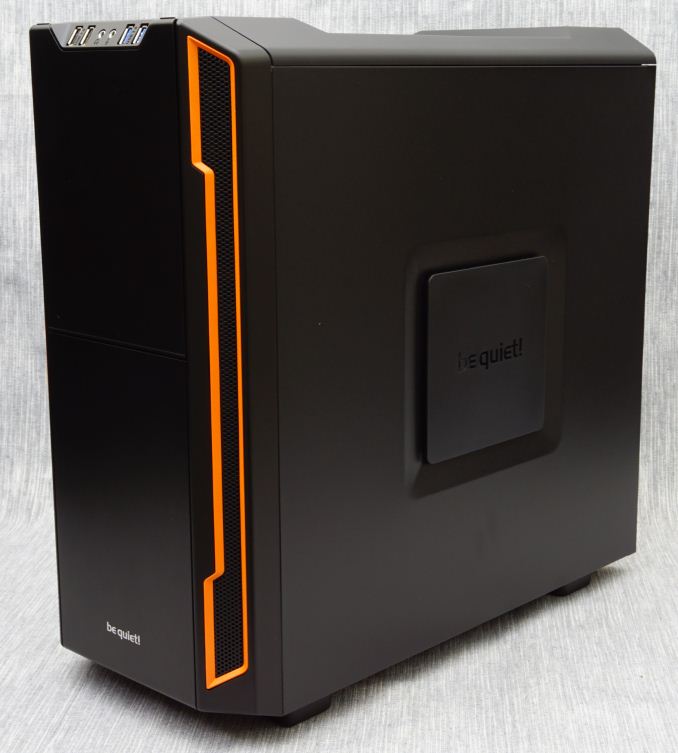
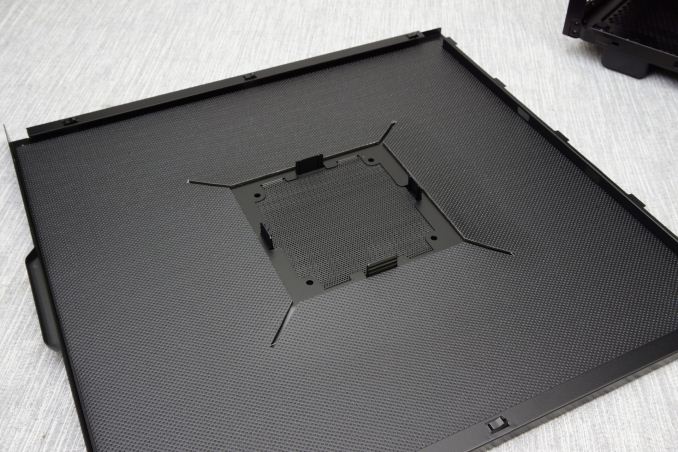

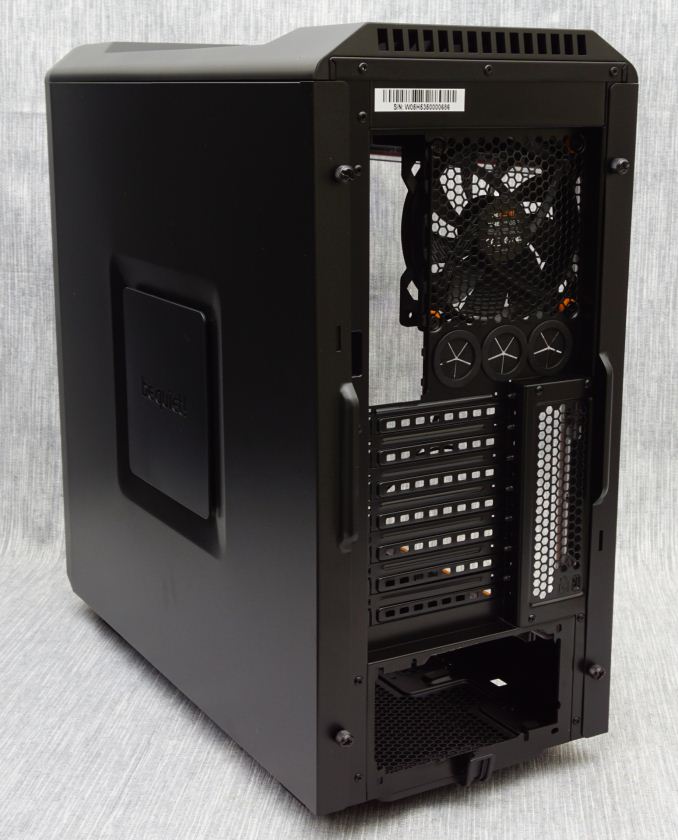
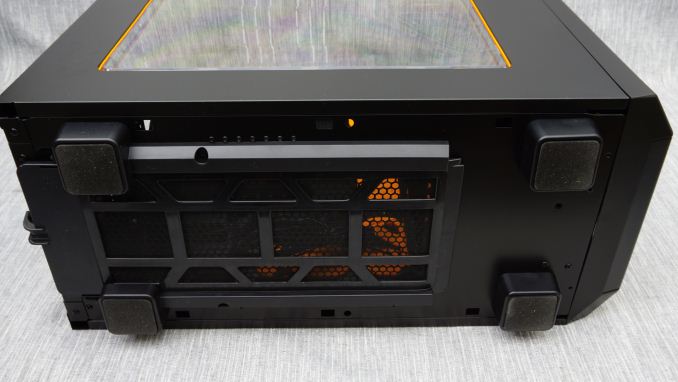








24 Comments
View All Comments
Pariah - Monday, November 21, 2016 - link
That's the most recent video card they have done a full review of. No time for video card reviews when a new ssd or cell phone no one cares about is released every week.arizzek - Monday, November 21, 2016 - link
I think in this coumputer is only Radeon HD 5770http://american-truck-crack.website/
Thrawn - Thursday, November 17, 2016 - link
Looks like a nice case in a few ways especially of course for those that demand quiet.Is there some reason I am not aware of that none of the high end cases that get reviewed ever seem to have the new USB-C ports? Not really a complaint about this case specifically so much as of the industry in general. I figure if I get a case I want to use it for a very long time since it doesn't exactly die of old age like a lot of components so I want it to support new connection standards at least a little.
DanNeely - Thursday, November 17, 2016 - link
Chicken and egg lag. Made worse by the same phenomena meaning that most cases only have 2 USB3 front panel ports and the mobos only have a single 3.0 header. And unfortunately, until the USB audio people sort out their problems with USB3 people with headsets are going to maintain a demand for 2.0 ports on the front.eek2121 - Thursday, November 17, 2016 - link
It's not just audio, some memory card readers have issues as well. I also own a keyboard that doesn't work.Timur Born - Sunday, November 20, 2016 - link
USB audio issues are mostly happening with non Intel based USB 3.0 ports (Asmedia), though, plus flaky cabling for those front case ports.rocky12345 - Thursday, November 17, 2016 - link
Very nice looking case for sure. Yes the flat front look has grown on me and I like it that they have tried to keep everyone happy by including 5.25 bays and 3.5 drive cages in a world that hates them. I would for sure tell a friend to get one if they wanted something quiet and look fairly good as well. Oh was nice to see they did not in close the power supply area as well.ThaneDE - Thursday, November 17, 2016 - link
"They currently have two different cases, the Silent Base 600 and the Silent Base 800"That statement is not true anymore - BeQuiet has recently released their 3rd case, the Dark Base 900, a very modable full-tower. See here: http://www.bequiet.com/de/case/699
mobutu - Friday, November 18, 2016 - link
"Noise testing has been performed with a background noise level of 30.4dB(A)."I wonder how you'll test those cases that are (default or undervolted) below your background noise.
And there are.
So far it seems that you only had just turbine cases as samples ;)
E.Fyll - Monday, November 21, 2016 - link
That is actually a misconception. You cannot have anything producing noise "below" your background noise. Sound energy is cumulative, meaning that every additional noise source is being logarithmically added to the whole. If something is producing even 0.1 dB(A), this will be logarithmically added to the base background noise of the room.That is how laboratory testing works. The instrumentation reads the base sound energy within the chamber, the sound energy that the tested sample produces, and then mathematically calculates the sound pressure of the tested sample assuming a baseline sound pressure of 0 dB(A). Although laboratories do have mechanically isolated rooms for such testing, the sound pressure in the chamber is never truly 0 dB; it is the equipment that has been tuned to take 0 dB as the calculation reference. You cannot truly have 0 dB anywhere in nature except in the void of space.